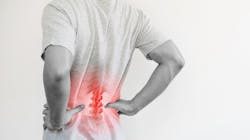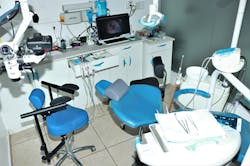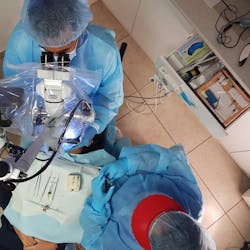Dental ergonomics: It's not just posture
There needs to be a better understanding of ergonomics in dentistry. Generally, dentists tend to associate ergonomics with posture, which is a misconception.
Within my immersion in this beautiful discipline—which together with human factors generates a broad perspective of how work is done—I assure you that posture is a critical factor when it comes to generating results in the office. It’s essential because it protects our machine, our body, from painful injuries, and prevents us from becoming disabled and unable to practice our beloved profession.
But in this broad conceptual framework of ergonomic management, there are many other factors to consider to generate an efficient workflow that respects the health of each operator. It’s a good idea to incorporate some of the elements used in human factors.
Improving operational performance: This includes procedural design, fatigue risk management, and culture.
Designing for human use: This calls for a user-centered design, system and safety changes, and understanding and managing errors.
Designing resilient systems: This means communication and decision-making, training, and competence.
The analysis of physical fatigue generated by bad and prolonged postures and frequency of movements outside of neutral are only part of the whole. I’ve applied the concepts within my practice as a full-time endodontist.
You might also be interested in: The 4 pillars of dental ergonomics: A simplified approach to work efficiently and painlessly
What’s involved in ergonomics?
We have instituted appropriate training of staff with clear guidelines about their responsibilities, a focus on customer service, managing scheduled break times, the preorganization of instruments according to previously scheduled procedures, and a high awareness of attention to patients adjusted according to task analysis. All of this has decreased the pressure of time, interruptions in workflow, less horizontal reach for instruments, and management of fatigue. We’re aware and intentional in each treatment and management of the patient.
Everything that happens outside the patient's mouth must be handled efficiently by the dental assistant, with short and precise movements, in such a way that the operator only receives the instruments in his hands or fingers. A wide range of furniture, delivery systems, and carts streamline this workflow.
The type of ergonomic stool specially designed for prolonged sitting work is also essential. The support proper stools provide are for different body components in long hours of sitting, and they promote less muscle activity and fatigue.
The delivery system should generate the best advantage since everything is between the assistant and operator to develop the best four-handed workflow. The movable carts allow frequently used instruments to be brought closer to horizontal reach distances to maintain posture and efficiency.
The use of precision technologies such as deflection angle magnifying glasses and the conventional and 3D optical microscope provides excellent clinical results. But these must be accompanied by training and, above all, used in the neutral work posture to get the most out of them. Note the layout in figure 1.
Communication within the work team is essential for optimal functioning in the office. There should be clear guidelines and feedback on processes to make them more efficient, from the administrative part to the dental procedure. This can be controlled with observation and followup of operations to improve work practices, as seen in figure 2.
The holistic concept from the multiintegral point of dental practice analyzes all the factors, not just one. All parts are fundamental, like the instruments of an orchestra. The same happens with our dental practice—all components must be carefully incorporated in a conscious way to create harmony in the environment and generate quality results, optimal performance, and mental and physical health for all team members.
Editor's note: This article appeared in the August 2023 print edition of Dental Economics magazine. Dentists in North America are eligible for a complimentary print subscription. Sign up here.
About the Author

Juan Carlos Ortiz Hugues, DDS, CEAS
Juan Carlos Ortiz Hugues, DDS, CEAS, is a master of the Academy of Microscope Enhanced Dentistry (AMED), associate professional in ergonomics by BCPE, CEAS II, and president of the AMED. He wrote the book, Ergonomics Applied to Dental Practice, available from Quintessence Publishing. He provides lectures, training, and advice on advanced dental ergonomics in Latin America and the United States, mainly related to ergonomics applied to dental microscopy.


